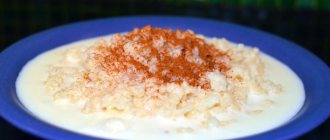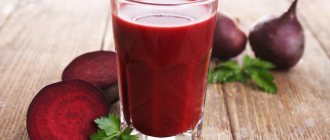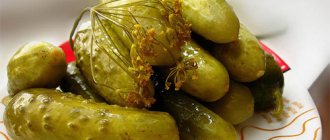General rules and principles
When drawing up a menu, it is important to take into account whether the baby is breastfed or bottle-fed. Pediatricians recommend that at this age, a child fed with breast milk should have it in his diet several times a day.
This is especially important after waking up in the morning and before going to bed at night. For bottle-fed babies, you also need to offer the formula at least 2 times a day.
When creating a menu for a child, you must adhere to the following recommendations:
1. Pay attention to proper food preparation , since at this age the baby can eat steamed, stewed or boiled foods.
2. It is strictly prohibited to add any additives to food. These include starch, various sweeteners, sugar, pepper or salt. They will not bring any benefit, and the child is not yet able to recognize the taste of food.
3. You should not grind all products to a puree state. By 11 months, the baby can already chew. Very large pieces can be slightly mashed with a fork.
4. You need to pay attention to the child’s taste preferences and under no circumstances force feed.
5. Include all existing types of foods in your diet:
- vegetables;
- meat or fish;
- fruits;
- cereals;
- dairy products.
6. Avoid allergy-causing foods on the menu. First of all, these include any nuts and citrus fruits. It is not advisable to give nightshades, such as tomatoes and eggplants, to an 11-month-old baby.
In no case should the daily menu of an 11-month-old child contain:
- fried foods;
- pickles;
- canned meat or fish;
- red fish;
- herring or smoked meats;
- spicy seasonings;
- sausages;
- chocolate;
- cocoa or coffee.
Menu Features
- Food is served boiled, stewed and steamed.
- The menu of an 11-month-old child should not contain hot seasonings, potato starch or flavor enhancers.
- Fresh herbs are allowed, as well as salt and sugar in small quantities.
- It is best to mash baby food with a fork. This is no longer a puree, but it’s still too early to give whole pieces to the baby - he has barely cut a few teeth, and chewing skills are still at the formation stage.
- You can feed a toddler for 11 months with salads made from raw vegetables, grated on a fine grater and seasoned with olive or sunflower oil.
- Don't try to include as many foods as possible in your diet.
- First of all, the menu should contain vegetables, fruits, cereals, meat, fish and dairy products.
- Pay attention to dishes that your child likes. For example, if he doesn't like rice, don't force him to eat it.
- Try to avoid foods that are likely to cause allergies. Among them: honey, nuts, chocolate, citrus fruits, exotic fruits.
- It is too early to give whole milk; leave it on the menu until the child reaches one year.
- Introduce all new foods gradually, once a week, starting with one teaspoon, and at the same time monitor the child’s reaction. At the slightest sign of an allergy, immediately cancel the new food. It will be possible to “try your luck” again in a couple of months. If necessary, consult a pediatrician.
Home cooking or manufactured products
Mothers often face the question of whether to feed their baby food from a jar or prepare food themselves. For example, the famous doctor Komarovsky believes that there is no difference between these foods.
Store-bought baby food jars are a great cooking solution for moms who don't have the time to prepare individual meals at home. It is important when purchasing to pay attention to the quality of the products.

The most important criteria here are:
- naturalness, which implies the use of only environmentally friendly components in production;
- lack of salt or spices, as well as stabilizers and preservatives;
- acceptable shelf life.
Baby food must be marked with an age category. For example, you can start consuming some foods from 6 months, and others from 12 months.
Food is also divided into categories depending on the type:
- meat;
- vegetable;
- fruit dishes or side dishes.
But some pediatricians believe that food in jars can have a harmful effect on the health of the baby, namely, cause problems with the gastrointestinal tract or allergies. After all, you can’t always trust what is written on the label. Any food contains starch or soy, which are not beneficial for the baby’s digestive system.
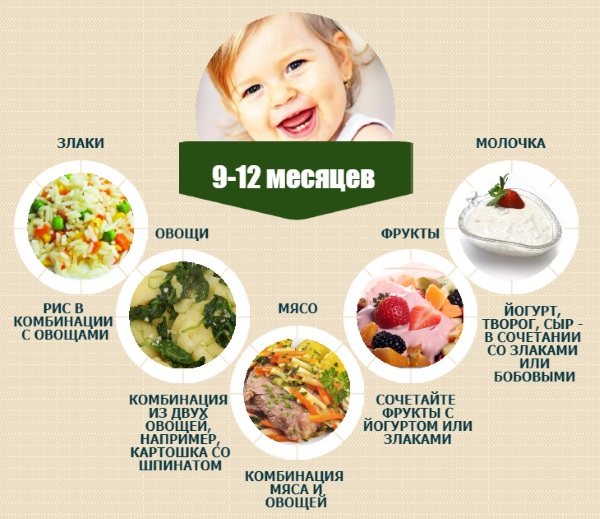
Vegetable dishes
The introduction of vegetables into a child’s diet should begin with hypoallergenic types. These include turnips, cauliflower, squash, light pumpkin, and zucchini. But it is necessary to start feeding any of these vegetables with extreme caution, since each organism is unique and the reaction to any component can be unpredictable. Therefore, you should add no more than one vegetable per week.
After the listed vegetables have been successfully mastered, you can try more complex products, such as:
- green pea;
- green bell pepper;
- potato;
- corn.

The menu of an 11-month-old child, after mastering the above products, may also include allergenic vegetables, which include tomatoes, celery, beets, and carrots. They also need to be introduced gradually, not every day. In order not to harm the baby, there should be no more than one type of new product for one week.
In the future, you can combine vegetables. There are many recipes for this.
Zucchini soup is good for an 11 month old baby. Its preparation is as follows:
- Wash a small zucchini, peel and cut into small pieces.
- Do the same with carrots (100 g) and potatoes (200 g).
- Pour purified water into a saucepan, bring to a boil and add chopped carrots and potatoes. Boil a little and add chopped zucchini.
- Cook until the vegetables are completely cooked.
- Chop some greens and add to vegetables. The soup is ready.
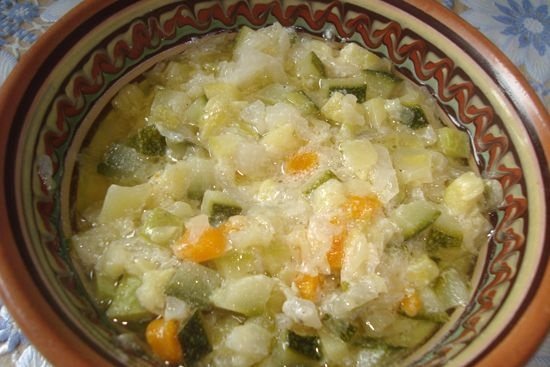
For babies who have not yet learned to chew fully, you can beat the mass with a blender or grind through a sieve.
Vegetable stew will also be beneficial for your baby. To prepare it you need:
- Take one zucchini, one carrot and one cauliflower inflorescence. Wash everything, peel and cut into small pieces.
- Boil in water or steam.
- Grind the prepared vegetables in a blender. You can puree them, or you can chop them a little.

As a rule, kids like this dish. The suggested vegetables can be replaced with potatoes, broccoli and carrots or pumpkin, potatoes and corn.
Delicious dishes
If a child refuses to eat a particular dish for no apparent reason, you need to try preparing it differently. Several interesting and quick recipes will help here.
Turkey meatballs
- Take 100 grams of turkey, 2 tablespoons of milk, 1 teaspoon of butter, 1 teaspoon of semolina.
- Scroll the turkey through a meat grinder into the minced meat.
- Melt the butter, add to the minced meat along with semolina, stir, leave for 20 minutes.
- Pour water into the pan, bring to a partial boil.
- Using a spoon, place the meatballs into the water and cook for 9-11 minutes.
Omelet with vegetables in a double boiler
- Prepare 4 chicken eggs, 3 tablespoons of water, 1 potato, 1 carrot.
- Wash, peel, finely chop the vegetables, place on the bottom of the steamer.
- Mix eggs with water and pour mixture over vegetables.
- Cook in a double boiler for 20 minutes.
- Stir the mixture and leave for another 7-8 minutes.
Zucchini stew
- Take a leaf of a head of white cabbage, 1 potato and 50-70 grams of zucchini.
- Wash the potatoes, peel them and cut them into cubes.
- Place the cabbage leaf and potatoes in a saucepan and add 90-110 milliliters of water.
- Simmer over low heat for 30 minutes.
- Cut the zucchini into cubes, add to the rest of the vegetables and simmer for another 15 minutes.
- Pass through a sieve, add a teaspoon of vegetable oil.
These rules and recipes will help make your child’s menu healthy, safe and tasty. Only a painstaking and competent approach to formulating a diet will help babies receive all the necessary nutrients and ensure healthy, full development.
Porridge
A significant place in the diet of an 11-month-old baby is occupied by grain-based products called porridge. All their types are important sources of carbohydrates, vitamins and mineral salts. The leading positions in this sense are occupied by buckwheat and oatmeal.
After babies successfully master vegetable puree in the form of complementary foods, after 1 month they can begin the gradual introduction of grain products. First of all, you need to start with low-allergenic cereals that do not contain gluten.
These include:
- corn;
- rice;
- buckwheat porridge.
It is necessary to start introducing any porridge in the morning, before breastfeeding. The initial dose should be no more than 2 tsp. The next day, if there is no negative reaction from the child’s body, you can increase the portion to 50 g. And only after that you can proceed to the usual dosage - within 200 ml.
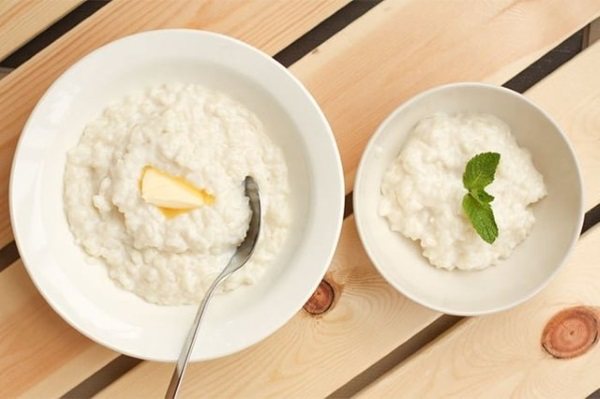
The menu of an 11-month-old child should include milk porridge. One of the most popular porridges for every day is rice.
The first porridges must be prepared with a water base and diluted slightly with breast milk. After successfully mastering such food, you can begin preparing dishes using cow's milk.
You should start with rice cereal, as it is easily absorbed by the body. But if your baby has colic, you shouldn’t feed it to your baby, but if your stool is unstable, this product is indispensable.
To prepare rice porridge, you must follow these steps:
- Rice cereal in the amount of ½ cup is soaked in water for half an hour.
- After the set time, thoroughly rinse the cereal.
- Boil 1 ½ cups of purified water in a saucepan and add a little salt.
- Pour the cereal into already boiling water, bring the mixture back to boiling temperature and cook under a closed lid for 20 minutes over low heat.
- Wrap the finished porridge in a towel and leave it like that for another half hour. This will make the dish more crumbly.
Buckwheat is the most nutritious product. But it is a heavier product for the child’s digestive system, so it must be introduced into the diet with extreme caution.
To prepare buckwheat porridge you need:
- Sort out the buckwheat in the amount of ½ cup and wash it.
- Pour 1 ½ cups of purified water into the pan and add a little salt. Bring to boiling point.
- Pour the prepared cereal into a saucepan and bring to a boil.
- Cover with a lid and cook for 20 minutes. over low heat. Before feeding, you can dilute the finished porridge with milk.
In addition to the listed cereals, an 11-month-old child can also prepare oatmeal. But it is advisable not to rush with traditional semolina and wheat cereals. They are recommended to be introduced into the diet only when the child reaches 1 year.
Fruit puree and juices
Juices will be beneficial for a baby if they are introduced into the diet no earlier than one year of age.
The earliest date is 10 months. To begin with, you need to give 1 tsp. and monitor the child's reaction. The optimal period for this is from morning to lunch.
You cannot give your baby concentrated freshly squeezed juice. It must be diluted with boiled water, following a 1:2 ratio. In addition, you should not combine the drink with food.
The daily menu of an 11-month-old child should include only juices from local fruits. Apple or pear drinks are ideal for this. You should not rush with exotic fruits, as well as with peaches, apricots or plums, as they have a laxative effect.
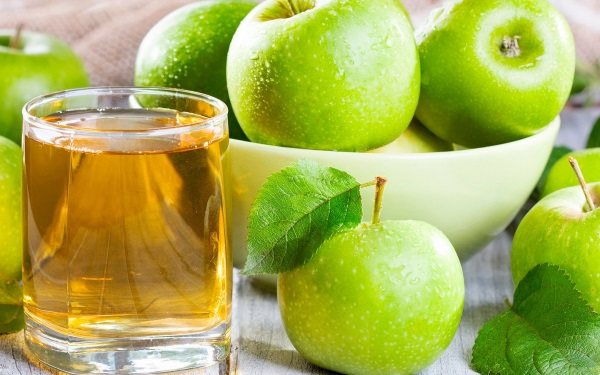
Gradually you can mix juices from 2-3 fruits. After the apples or pears are mastered, you can move on to cherries, raspberries, sweet cherries and currants.
Fruits, unlike juices, can be introduced at an earlier age. You need to start with one type. These could be bananas, pears or apples. By 11 months, it is no longer necessary to grind fruit until smooth. It is necessary to prepare a puree from larger particles.
What can you feed your baby at 11 months?
The baby should have a balanced diet, enriched with all the substances necessary for a growing body. And what exactly is included in his diet:
- Fruits and vegetables, berries. These are irreplaceable sources of vitamins, fiber and pectins. The baby should receive these products in full, corresponding to his age standards. You can already prepare different dishes from them: purees, mousses, compotes, juices, jelly, puddings. And it is even allowed to eat grated fruits raw, but in small quantities.
But do not forget that the baby’s menu should not contain red fruits, citrus fruits and exotic representatives.
- A mandatory daily product is porridge. Oatmeal is considered to be the healthiest (but preferably not in the form of flakes). If the baby does not have celiac disease. It is better to cook such porridge with water, and simply add oil to the prepared product. However, cooking with milk is also allowed, but do not forget that the baby should not be given whole milk; dilute it 1:2 with water. It is better to change porridge every day. Buckwheat today, oatmeal tomorrow, rice the day after tomorrow, etc.
- Of course, an important component of a child’s table is meat dishes. These can already be meatballs, steamed cutlets, mousses, puddings. Try to give the meat in such a form that the little one tries to chew it on his own. Give preference to rabbit, turkey, chicken, veal, and young lean pork. I gave my son only rabbit and veal until he was one year old.
- Fish should also be in the baby’s diet. The baby should still avoid fatty varieties and red varieties.
- Cottage cheese, yogurt and kefir are important for the proper functioning of the digestive system. You can prepare these products yourself. Do not hesitate to serve dishes not only in their pure form, but also with the addition of already well-known fruits.
- Also, the baby can eat eggs, pasta, diet cookies, wheat bread, it is allowed to add butter to prepared dishes (both vegetable and creamy) in small quantities, and the amount of salt and sugar should also be minimal.
Reduce your consumption of sweets to almost nothing. The baby is just getting his first teeth, and you shouldn’t disrupt their development. And, of course, the child’s diet should not yet contain chocolate, citrus fruits and other allergenic foods.

Meat, eggs
Meat is an essential source of protein and iron, which is easily digestible. This product must be included in the diet when the child reaches eight months of age. You need to start with 1 tsp. meat puree. By the 11th month, the portion is about 60 g. You can purchase specialized meat baby food in a store or pharmacy.
You can make your own meat puree. The technology is as follows:
- Wash the meat very thoroughly, remove films and fat, and wash well again.
- Boil until tender, cool and chop using a sharp knife.
- Pass pieces of cooked meat through a meat grinder 2 times.
You can mix meat puree with vegetable or milk for feeding.
The daily menu of an 11-month-old baby may include the following types of meat:
- veal;
- rabbit meat;
- horsemeat;
- turkey.
It is also important to include eggs in your child's diet. But they must be introduced with extreme caution. A baby can often have an allergic reaction to egg whites, so you need to start with the yolk.
To begin with, the baby needs to be given a quarter of the yolk, which must first be mashed and diluted with milk. If the body does not react to the innovation, you need to gradually increase the amount of yolk. After a month, you can already give the whole yolk. Protein is introduced no earlier than at the age of 8 months. Eggs should be present in the diet no more than 2 times a week.
Features of the diet at 11 months with breastfeeding and artificial feeding

But there are mothers who continue to breastfeed for up to a year. But milk alone becomes insufficient for the baby to support vital functions, growth and development. Therefore, starting from 6-9 months of age, pediatricians advise introducing complementary foods. At the same time, you should not wean your baby from the breast.
Mother's milk continues to be necessary for the baby. It contains vitamins and minerals that are needed to strengthen the immune system. The results of studies by medical scientists have shown that breastfed children get sick less. The nutrition of a child at 11 months has a number of features.
Diet principles for breastfeeding:
- It is better to breastfeed in the morning and evening hours;
- Feeding at night will calm the baby and have a beneficial effect on sleep;
- at other times it is worth giving the child complementary foods;
- the baby should receive a certain amount of proteins, carbohydrates and fats every day;
- It is important that the food is of high quality and healthy.
Features of the diet of children on artificial nutrition:

- when using non-adapted mixtures, coloration should be 10% higher than with breastfeeding;
- the food needs to be healthy and hypoallergenic;
- nutrition should be balanced, rational, varied;
- the frequency of food consumption is similar for breastfed children;
- In addition to infant formula, the menu should include fruits and vegetables.
In each case, the diet is compiled individually. It is important to know your baby's taste preferences.
When including regular foods in a baby’s diet, it is necessary to take into account his tendency to food allergies and intolerance to certain substances. It is advisable that the menu be developed by a specialist.
Table with menu for each day of the week
It will be convenient to plan a child’s nutrition at 11 months, taking into account the following average indicators:
| Type of feeding | Amount of formula or breast milk, ml | Porridge, g | Meat puree, g | Vegetable puree, g | Natural juice, ml |
| Chest | 200 | 150 | 50 | 130 | 30 |
| Artificial | 180-200 | 130-150 | 50 | 130 | 60 |
An approximate diet for an 11 month old baby for 1 day is as follows:
- 6:00 – formula or breast milk;
- 10:00 – porridge, fruit puree, egg yolk;
- 14:00 – vegetable puree or pureed soup, meat puree, juice;
- 18:00 – cottage cheese, kefir, fruit puree, cookies;
- 22:00 - mother's milk or formula.
By 11 months, all the main complementary foods have already been introduced, but the main one, after all, is breast milk. All foods must be given in a certain sequence and time.
Products that are included in the menu for every day must be selected with special care. First of all, it is important for an 11-month-old child that they should be fresh.
When introducing new food into the diet, it is necessary to monitor the baby’s reaction. Do not be upset if your child eats less than the established norm. This may be due to the fact that at this stage he satisfies all his needs.
Article design: Svetlana Ovsyanikova
Rules for creating a menu
Baby menu at 9 months
Here are the basic rules for creating a menu for an 11-month-old baby:
- The type of feeding and the volume of formula in a given meal are taken into account.
- Any cooking options except frying. Cutlets should not be fried in oil. It is worth choosing the option of extinguishing with a small amount of water.
- When creating a menu, the child’s taste needs are taken into account. Don't force feed him something he will immediately spit out. Remember that the diet should contain 5 food groups: white meat, fish, vegetables, fruits and dairy products.
- Avoid “allergenic” foods – those that can cause allergies. Tomatoes may not be suitable for some children in their diet simply because they belong to the nightshade family, which tend to cause allergic reactions.
- The menu of an 11-month-old baby is for the most part similar to the “adult” diet, but without excesses.
Example menu for artificial feeding
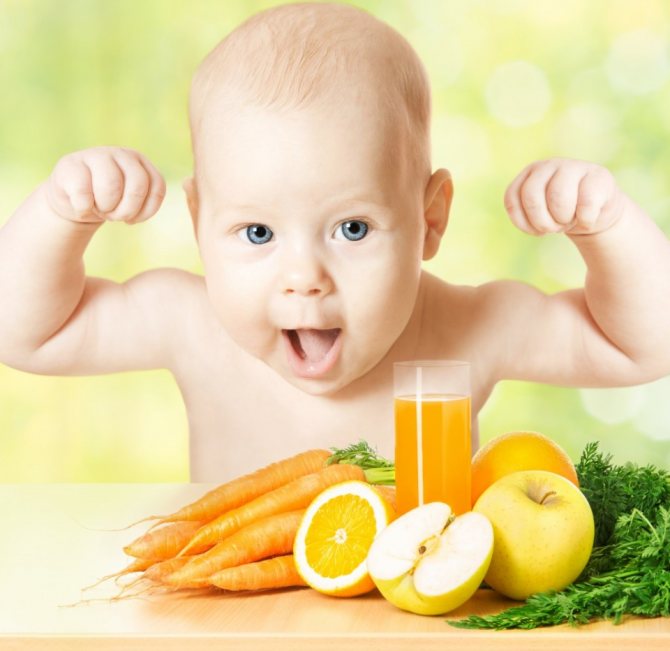
A healthy menu is a must for your baby’s health.
A sample menu for artificial children looks like this:
- The first feeding is formula (up to 200 ml).
- For breakfast, complex carbohydrates (it is best to take regular cereals, not branded “baby cereals”) - cereals: buckwheat, corn, oatmeal. Add half an egg yolk and a teaspoon of olive oil to the porridge. It is acceptable to give fruit puree up to 50 grams for dessert. or diluted juice.
- Lunch in the summer is a steamed meatball or a piece of fish (up to 50 grams), with stewed or boiled vegetables (100-150 grams). In winter, you can cook soups, but be sure to add cereals to them.
Additional Information. If your baby really loves soups and you want to make something tasty and aromatic for him, then you can prepare a healthy filling in advance. Finely chop the greens, place them in an ice tray, and pour a small amount of olive oil on top. Place in the freezer and use one or two cubes per serving of soup. It is very satisfying, healthy and tasty.
- Dinner depends on the baby. When the child is active during the day or has a tendency to wake up at night from hunger, then you should give some kind of porridge (buckwheat is best), and for dessert - 50 grams. fruit puree or 50 gr. cottage cheese. A little later, you can offer 150 ml of kefir.
- At night - mixture (up to 200 ml).
Nutrition Menu Chart
| Breastfeeding | 1 serving size (milk or formula) | Cereals | Fermented milk products, kefir | Meat fish | Vegetables fruits | Drinks (tea, compote, juice, jelly) |
| Chest | 200 ml | 150 gr. | 150 gr. | 50 gr. | 120-130 gr. | 20-30 ml |
| Artificial | 180-200 ml | 130-150 gr. | 150 gr. | 50 gr. | 120-130 gr. | 50-60 ml |
If there is a child growing up in a family who eats little or often refuses to eat, then the right decision would be to make the menu bright and colorful. Then a capricious child will be interested in taking apart this “food” figurine “piece by piece.”

Bright and healthy breakfast menu - porridge
Additional Information. The volume of liquid is calculated according to the formula: 50 ml per 1 kg of weight. However, it should be monitored if the baby has problems with stool (constipation), or has diseases of the nervous or cardiovascular systems. In this case, it is allowed to increase the consumption of drinks during the day.
Features of the diet during breastfeeding
At 11 months, mother's breast milk does not help satisfy the appetites of a rapidly developing baby. However, it certainly protects the baby from diseases and helps the body get the necessary minerals and vitamins.
The baby’s diet is in many ways similar to the diet of a person on a healthy diet:
- All dishes are boiled, stewed, baked. You should not grind it into a puree; it is permissible to mash it with a fork.
- You can add a little salt and sweeten the food. The food should still seem under-salted. You can add finely chopped herbs to taste.
- You can introduce fresh vegetables and fruits a little at a time. It’s better to grate them first. If the fruit or vegetable is soft, then grate it on a coarse grater or try cutting it finely, then offer it to the baby.
- Porridge can be boiled in milk. There should be no fresh milk in the diet.
- Eliminate all fatty, fried foods, smoked foods, store-bought sweets and chocolate, and allergy-causing foods.
Product volume
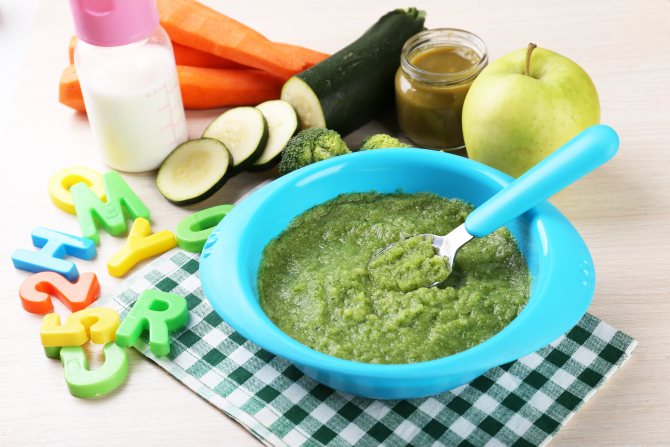
Serving volume of vegetable puree per meal
Baby's daily food needs
| Product | Daily value (in finished form) |
| Breast milk | Up to 500 ml |
| Porridge | Up to 200 gr. |
| Fruits, juice | 100-110 gr. |
| Vegetables | Up to 200 gr. |
| Meat or fish | 50-70 gr. |
| Bread | 10 gr. |
| Olive oil | 5 gr. |
| Cottage cheese | 50 gr. |
| Kefir | 300 gr. |
| Cookie | 15 gr. |
| Butter | 5 gr. |
Recommended amounts are indicated by the World Health Organization.
